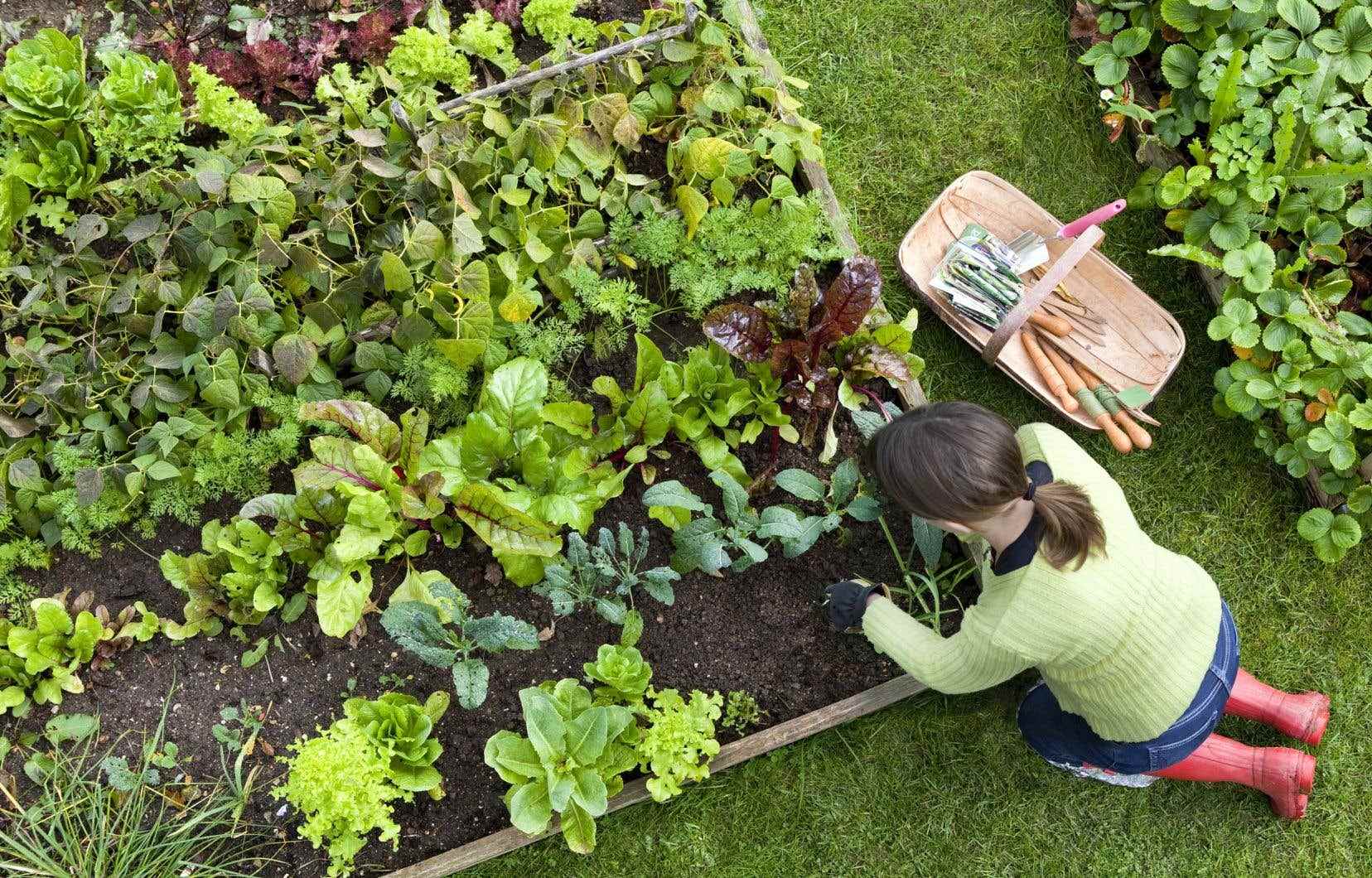This text is part of the special book Plaisirs
Are you hesitating to create a vegetable garden? Why not get started this year? Cultivating a vegetable garden is a very easy activity if you take the trouble to prepare the ground well. And thanks to the good care you lavish on it throughout the summer, you will maximize your harvests. Practical guide for the creation of your garden and its weekly maintenance.
To start off on the right foot
Before clearing the entire yard, you have to think about the area you want to cultivate: is it only to have fresh vegetables? Do you plan to can or freeze certain vegetables? Usually an area of four to six square meters is enough for a family of four. It will then be possible to accommodate two or three tomato plants, one or two cucumber plants, a few pepper or pepper plants and a few rows of beans, beets, lettuces, radishes, carrots and others. small vegetables.
Where to place it?
The vegetable garden should be positioned in full sun, in rather rich soil. Before preparing the space, it may be wise to perform a thorough soil test to better understand its strengths and weaknesses. This should be done every two or three years for best results. Go to the garden center with your sample! It is also necessary to provide a layer of 30 cm of loose soil so that the roots of the plants can develop easily.
Selection of favorite varieties
The choice of varieties is vast and you have to read the labels carefully or inquire to determine which ones best meet your criteria. For example, for tomatoes, the choices are endless: red, pink, yellow, speckled, green, purple, etc. There are also early and late tomatoes. Several vegetables can be bought as seeds and others as plants that have already grown. Just see what varieties are available and choose from them. The important thing is to go with your tastes, you choose what you want to eat.
time to plant
Before starting, the seedlings will be laid out in the place intended for them. To facilitate maintenance and harvesting, planting distances must be respected, so it is important to ensure that our work plan has been well thought out. Once everything is placed, all that remains is to plant and sow its seedlings. Once finished, a first watering must absolutely be carried out. It is important to keep the soil slightly moist so that the seeds can germinate well and the plants take root deeply. The ideal is to water in the morning to allow the roots to be irrigated and the foliage to dry before the end of the day. Provide a source of water near the vegetable garden to facilitate this operation.
Simplified maintenance
For a vegetable garden of four to six square meters, allow about an hour to an hour and a half of maintenance per week to carry out certain important tasks. It will be necessary to hoe the soil to break the crust and allow watering to be more effective, and take the opportunity to weed. Watering will be done as soon as the soil begins to dry out to prevent the plants from wilting. For best results, fertilizer is essential. The application will be done according to the manufacturer’s recommendations. Some vegetable plants will need staking, such as tomatoes. It is also sometimes necessary to prune to control the vigor of some. When the plants no longer produce, they must be uprooted. The appearance of insects and diseases can occur. In such a case, do not hesitate to bring a sample to the garden center for diagnosis and to know the appropriate treatment if necessary.
Pro tips
1. Since the beans are harvested early, it is possible to sow them at the edge of the vegetable garden where it will be easy to pull them out to make room for other plants, such as cucumbers or tomatoes, at the end of the season.
2. Radishes, peas and spinach are cool climate vegetables. They must therefore be sown early so that they can take advantage of the rather cool spring temperatures and thus be harvested when the hot weather arrives.
3. To prolong harvests, some vegetables can be sown in succession. For example, the rows of beets, carrots, beans, lettuces and radishes will be divided into 3: each third will be sown one week apart.
Technique to discover
When a crop has been harvested, it leaves an empty spot. Why let weeds take hold when some fast-growing vegetables can produce when the season ends? Many vegetables can be sown later in the season for harvest in the fall.
Some good choices:
+ carrots
+ snow peas
+ turnips
+ spinach
+ radish
+ leaf lettuces
